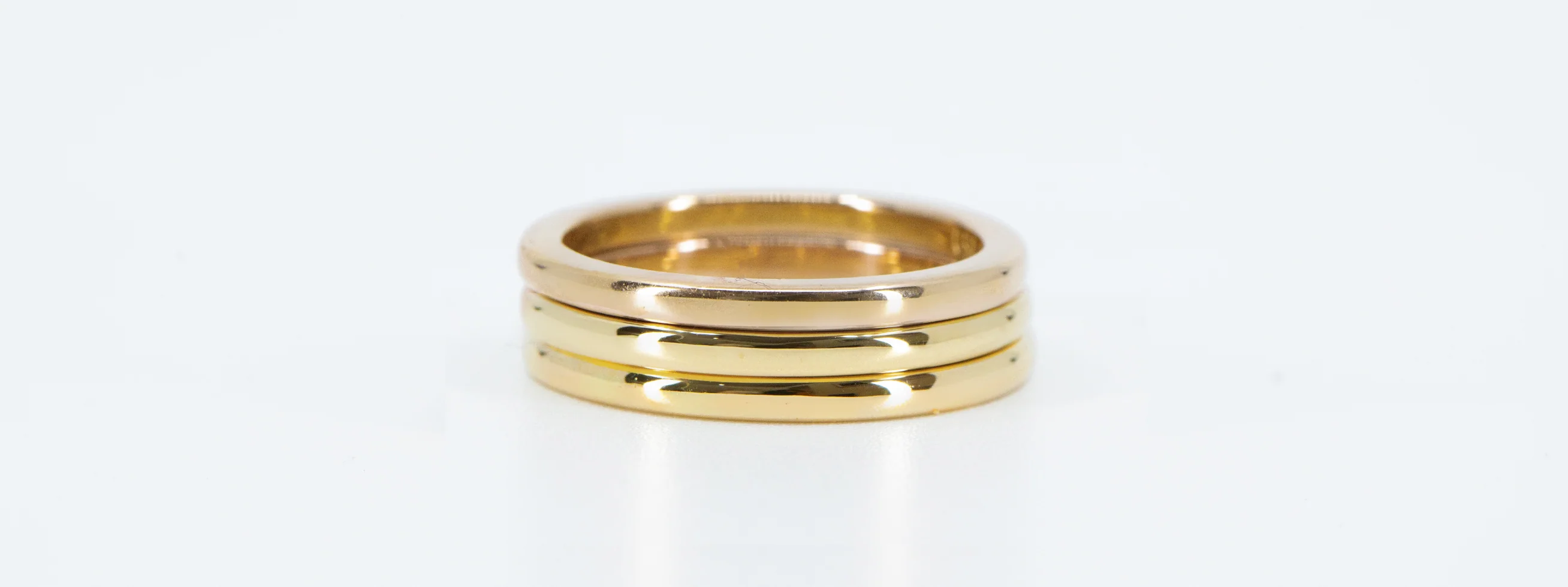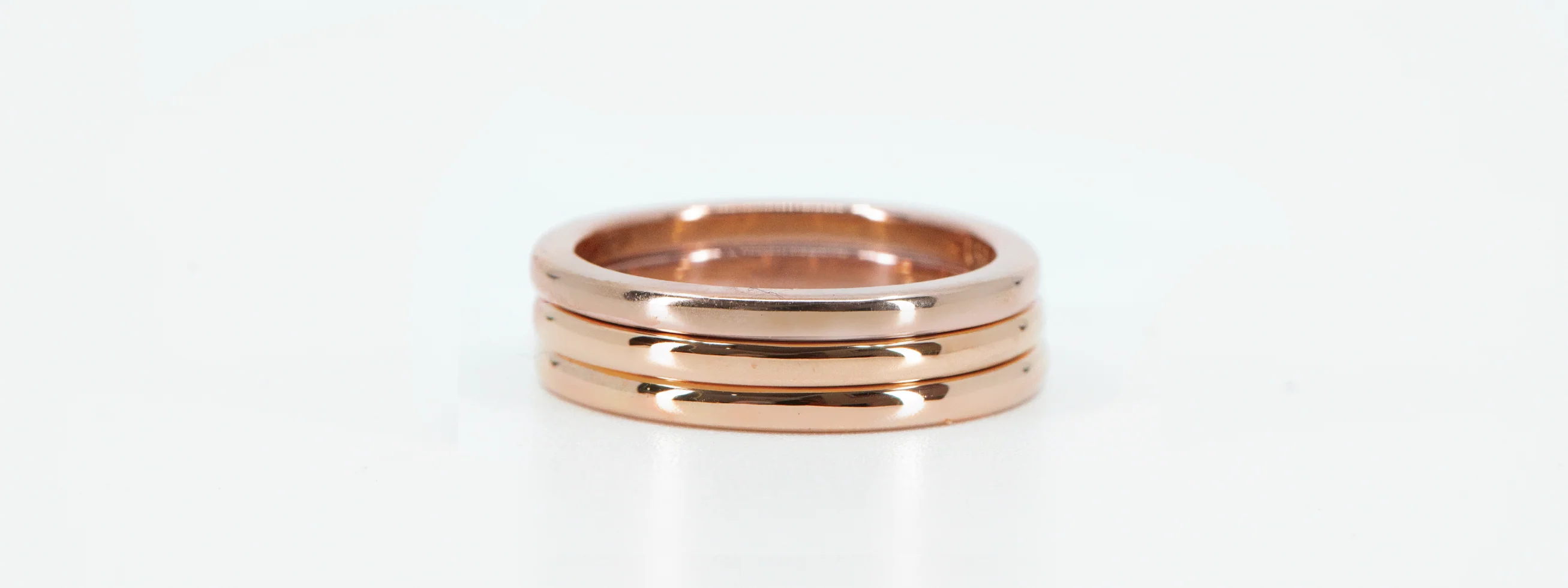What is the difference between 9K, 14K and 18K gold?Updated a month ago
Metal karat refers to the percentage of pure gold in the alloy, when compared to other metals.
The higher the karat, the more gold. 24K gold is pure gold, but is unsuitable for jewellery as it is so soft.
18K gold has a higher pure gold content, and this makes it slightly more malleable. It is less brittle, which means the overall integrity of the prongs and claws can be higher. 18K gold may be marginally more susceptible to surface scratching.
14K gold has a lower pure gold percentage than 18K gold. It is less malleable, which means it is less prone to bending if exposed to harsh handling, and more brittle, so more prone to snapping or breaking a claw if lifted.
9K gold has the lowest percentage of pure gold, and higher scratch resistance - it is most commonly used for fine jewellery, and is suitable for men's rings. We do not use 9K gold for any of our rings, due to its lower purity.

In Yellow Gold, the colour of 18K is more lustrous and yellow, whereas 14K is creamier or more subtle in its yellow colour. 9K gold has a slightly darker and softer gold hue.
In White Gold, there is no visual difference between 9K, 14K and 18K finished jewellery, as they are both coated in an outer plating of rhodium. As this plating wears away, the slight differences in colour may become apparent.
In Rose Gold, 9K gold has stronger coppery undertones, whereas 14K has a lighter champagne colouring with more yellow undertones. 18K has warmer rose or red undertones, and is more lustrous.

You can learn more about your metal options in our Metals Guide here.